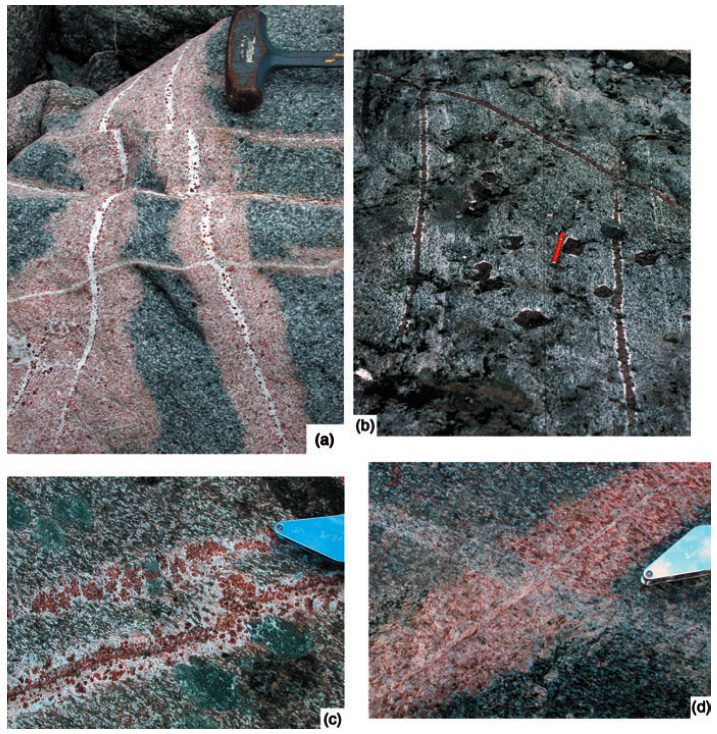Publications
° Clarke, G.L., Daczko, N.R., Klepeis, K.A. and Rushmer,
T., 2005. Roles for fluid and/or melt advection in
forming high-P mafic migmatites, Fiordland, New Zealand.
Journal of Metamorphic Geology, 23, 557. doi:10.1111/j.1525-1314.2005.00594.x
Abstract
A series of striking migmatitic structures occur in rectilinear
networks through western Fiordland, New Zealand, involving, for the
most part, narrow anorthositic dykes that cut hornblende-bearing
orthogneiss. Adjacent to the dykes, host rocks show patchy, spatially
restricted recrystallization and dehydration on a decimetre-scale to
garnet granulite. Although there is general agreement that the
migration of silicate melt has formed at least parts of the structures,
there is disagreement on the role of silicate melt in dehydrating the
host rock. A variety of causal processes have been inferred, including
metasomatism due to the ingress of a carbonic, mantle-derived fluid;
hornblende-breakdown leading to water release and limited partial
melting of host rocks; and dehydration induced by volatile scavenging
by a migrating silicate melt. Variability in dyke assemblage, together
with the correlation between dehydration structures and host rock
silica content, are inconsistent with macroscopic metasomatism, and
best match open system behaviour involving volatile scavenging by a
migrating trondhjemitic liquid.

|
 ARC Centre of Excellence for Core to Crust Fluid Systems
ARC Centre of Excellence for Core to Crust Fluid Systems